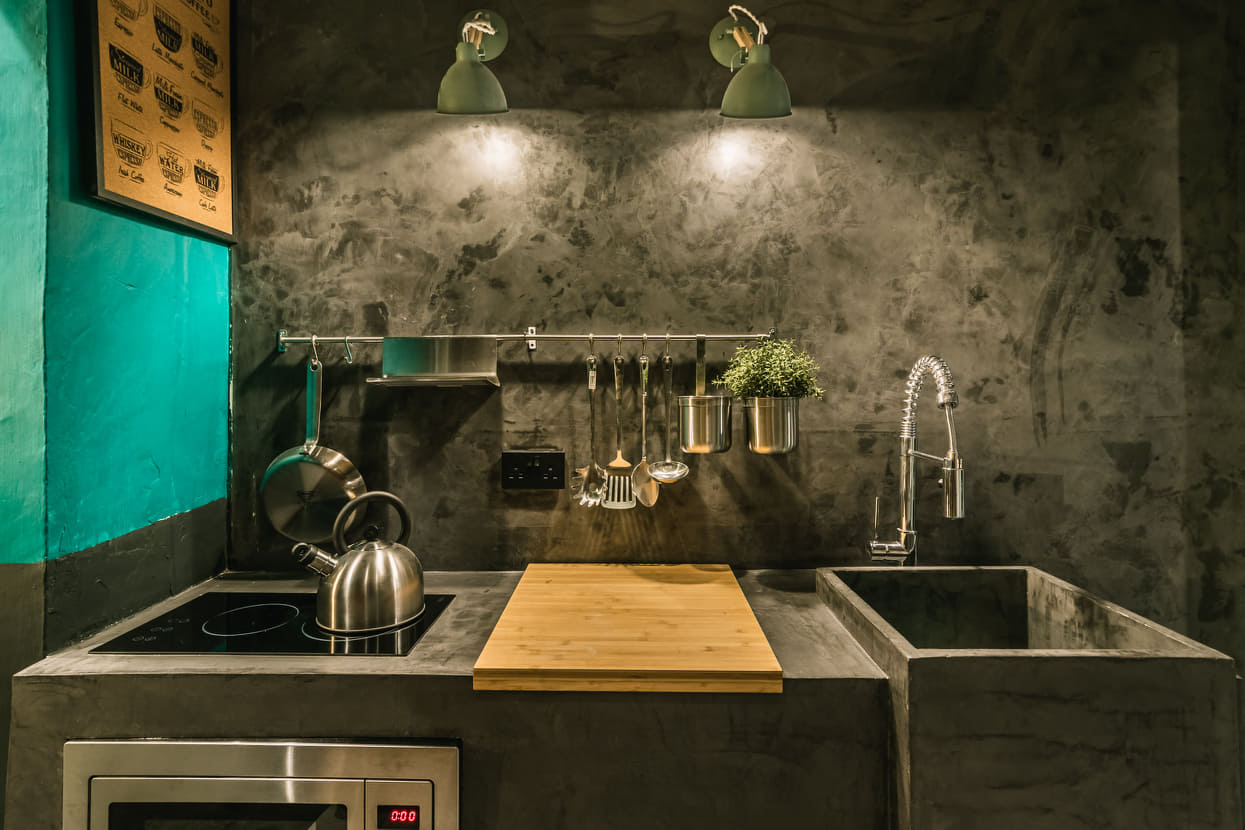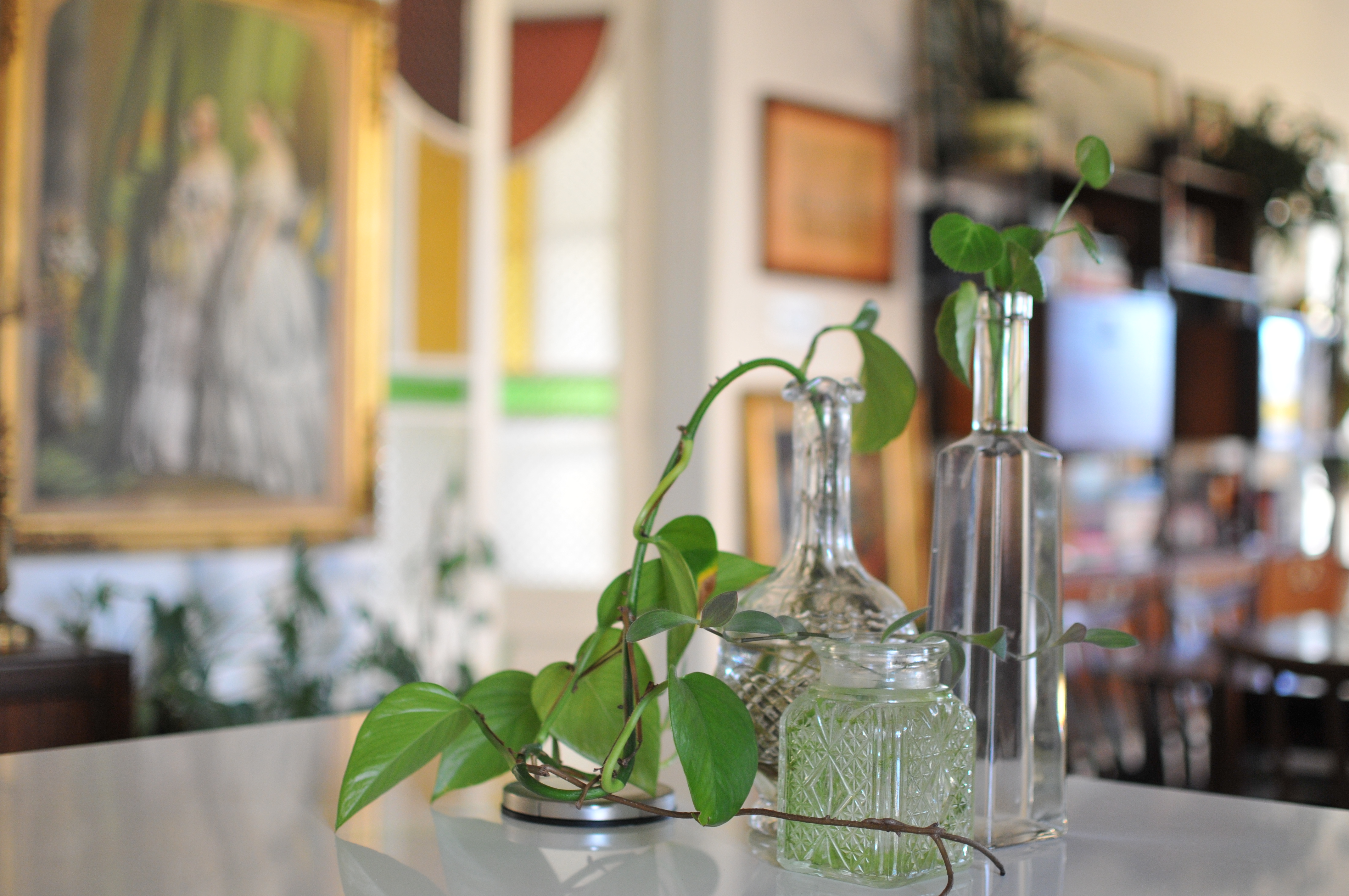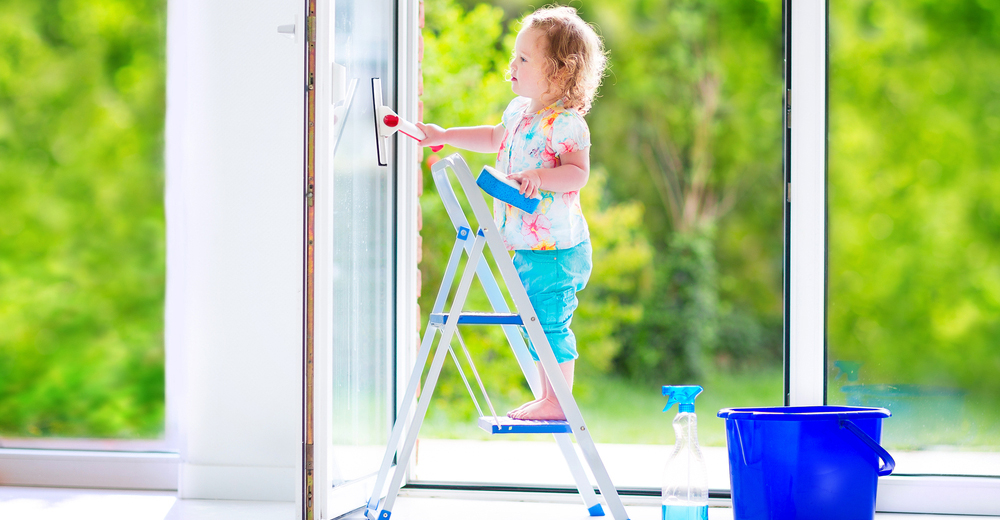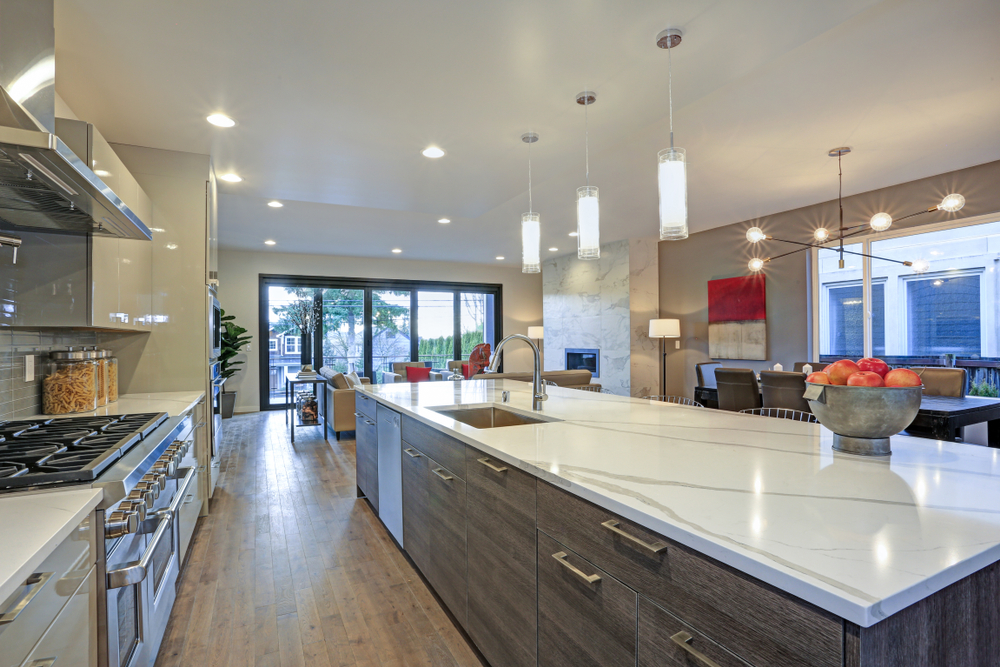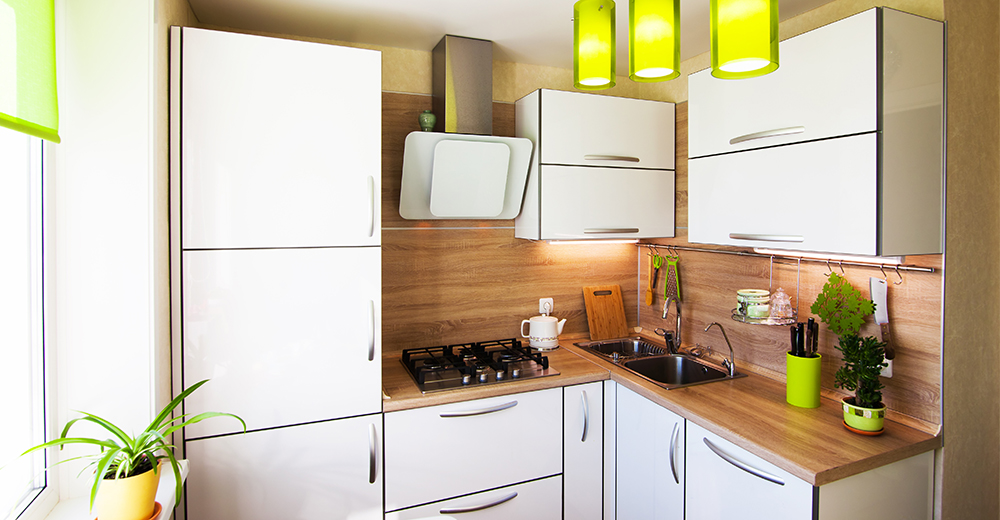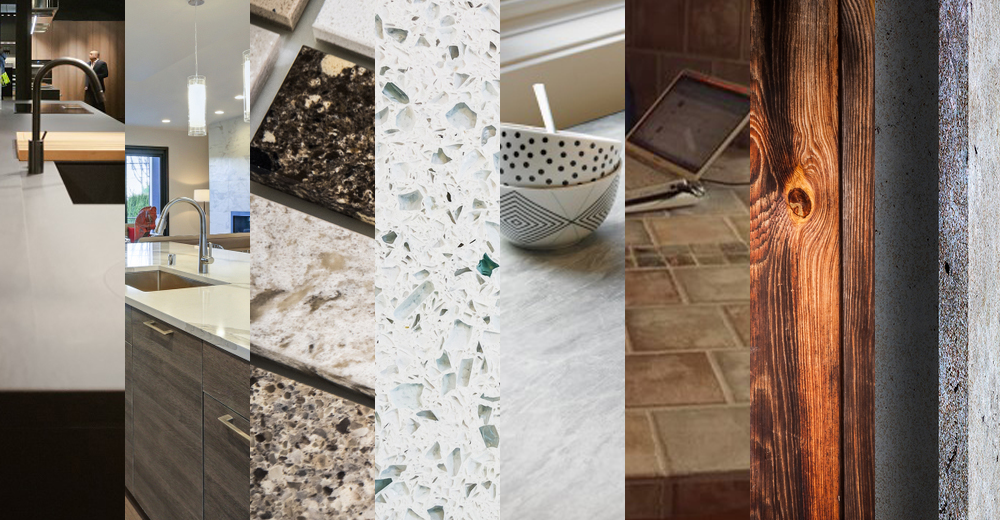Countertops may look nice and shiny at the store, but the real test will be in your kitchen, where the material will be subjected to dropped pots, spilt wine, sharp knives, and children. Quartz and granite may be the obvious best, but they’re not the only way to a lasting kitchen. We took a look at consumer reports and had a chat with the experts, here is what we found out.
Quick note: Consumer report agencies test materials by putting mustard, ketchup, and other ingredients on the countertop for around 24 hours. They also pour 400 degrees oil on the surface to test heat resistance.
#1 The best countertop material: Dekton
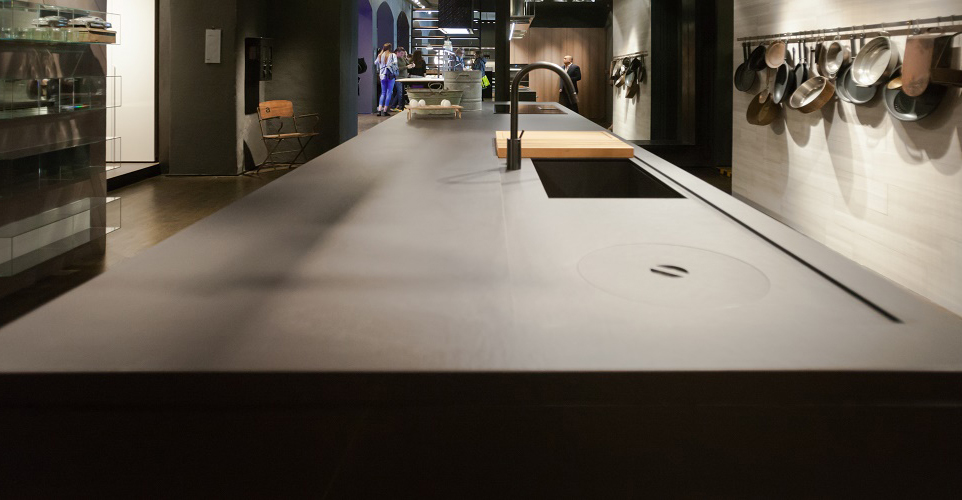
For the cream of the crop, ask for dekton – it is a sophisticated blend of raw materials pressed into an ultra-compact product in a process referred to as ‘sinterisation’.
How does it measure up?
It is the most scratch resistant surface on the market, completely stain proof, withstands high temperatures – Dekton is the king of countertop materials. Understandably, it’s also the most expensive option.
#2 The man-nature countertop combo: Quartz
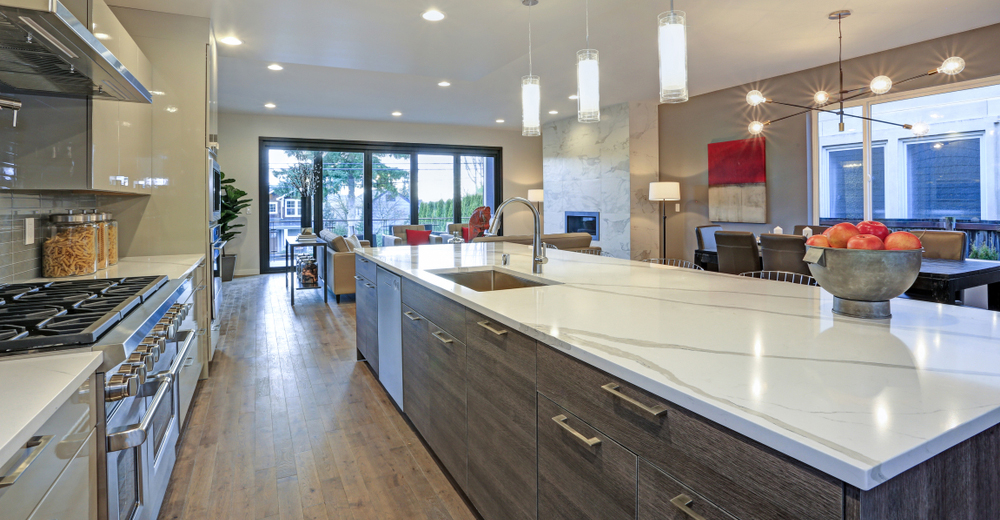
Crushed quartz stone is mixed with resin to produce countertops that take any look you wish for – from solid colours to the appearance of real granite.
How does it measure up?
The man-nature combo beats natural stone in toughness, but it’s loved above all because it requires very little maintenance, doesn’t need sealing, and has a ridiculous resistance to stains.
Like Dekton (which is used to make Quartz), it is one of the more expensive options in the market. Also, it is worth noting that it is not as heat resistant as granite or crushed glass.
#3 The status symbol: Granite
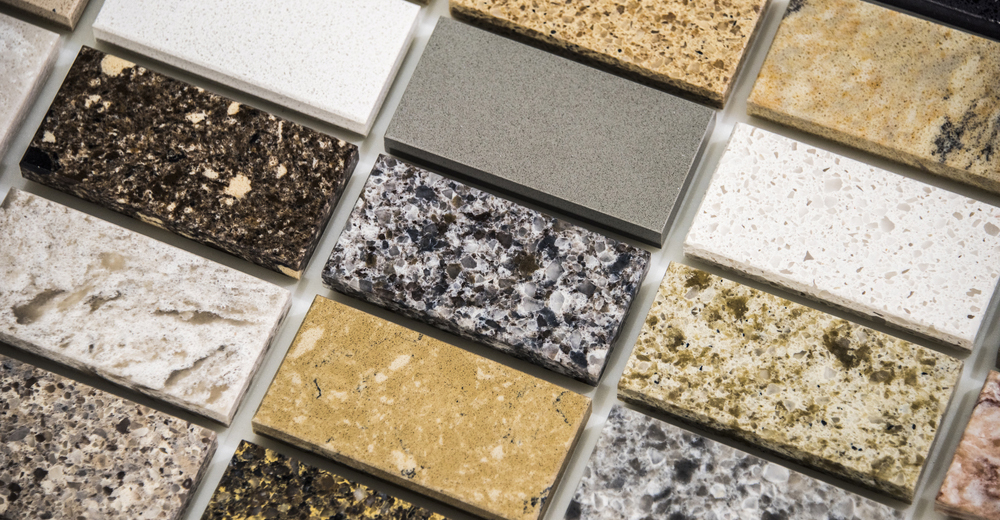
Back in the 1990s, granite officially became a status symbol in the world of countertops. You had “made it” once you owned a counter that was made of natural stone.
How does it measure up?
Granite colours can range from subdued earth tones to slightly more vivid blues, greens, and reds. Design-wise, granite can be unpredictable. It comes right out of the earth, so appearance will deviate a little along the slab and not all of it will look like the sample.
Granite is a porous stone, which means it needs to be sealed on a yearly basis to protect it against stains.
Price wise, it is on the same level as Quartz – although you may find low-end granite that costs a bit less.
#4 The poor man’s marble: Concrete
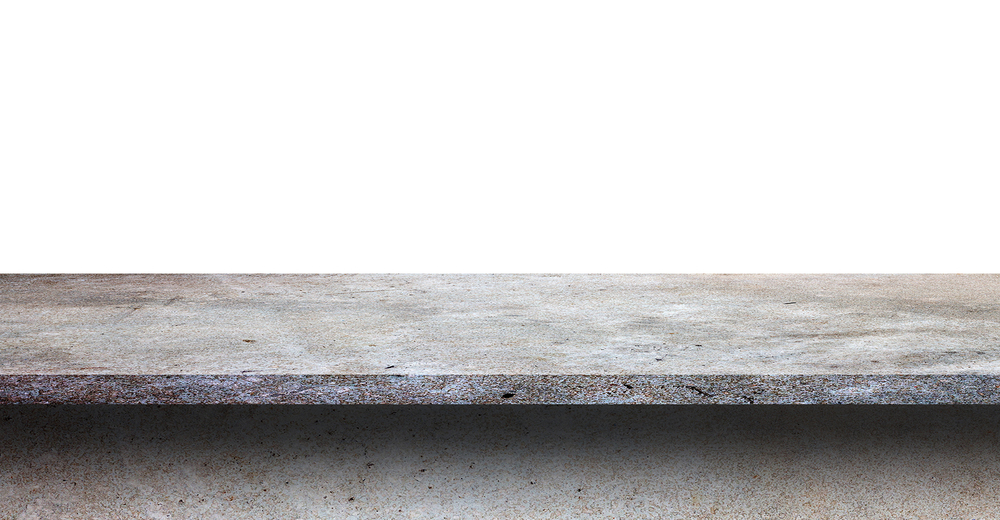
If you want a rock-solid, stone-like countertop without going the ‘granite’ route, then you should consider concrete. It is the only counter material that you can shape entirely to your liking.
How does it measure up?
Unlike other options, the cost of a concrete countertop is not in the material, but rather in the artisan’s skill and creativity. Custom elements such as inlays, aggregates, or special finishes add considerable cost. Concrete countertops need occasional sealing, but remain a good, robust, mid-range option.
#5 The eco-friendly countertop: Crushed (Recycled) Glass

A newcomer to the world of countertops that is as stunning as it is durable. Glass is recycled from beer bottles, traffic lights, and windshields, making it an eco-friendly countertop choice.
How does it measure up?
With crushed glass, there are two possible aesthetic routes: When set in acrylic, the glass looks like it’s floating in a lake; when set in cement, the glass creates a shimmery mosaic.
Crushed glass counters don’t chip, scratch, stain, or burn. They’re nonporous, so they don’t need sealing, like granite and, unlike quartz, it doesn’t fade over time. On the other hand, it can’t handle weight like granite or quartz, and foods with a high acidic content will eat away at its surface.
Crushed glass is environmentally friendly but fairly expensive.
#6 The budget countertop: Laminate (Formica)

This chameleon-like product can mimic everything from wood to granite in its appearance. Laminate kitchen countertops are a paper-plastic product that tops several layers of Kraft paper with a resin impregnated with any colour or pattern you may wish for.
How does it measure up?
It doesn’t need any special sealers or cleaners, and it’s stain resistant. But, it does crack, scratch, and scorch more easily than the countertop materials it resembles, and it’s not the easiest to repair.
40% of prospective buyers avoid laminate, but we believe it’s worth a second look. It’s one of the least expensive options out there, and its main disadvantage – its dark seams – can be covered by adding a decorative edge, for example using wood.
#7 The comeback king: Tile

In the 70s and 80s, tile countertops were extremely popular, but the material fell out of fashion – now it is back, and it’s more popular and customisable than ever. With tile, you can mix and match to achieve a unique, personalised look. Tile countertops can look crafty or contemporary, making them a beautiful and versatile countertop material.
How does it measure up?
Tile is tough and easy to clean. It resists cuts, stains, and heat. Tile easily cracks if skillets and pots are accidentally dropped on it, but thankfully, it can also be easily replaced if you buy spare.
It is important to factor in the fact that it needs annual resealing and that the grout joints between the tiles make for a challenging countertop to clean.
#8 The dark horse of countertops: Butcher’s block
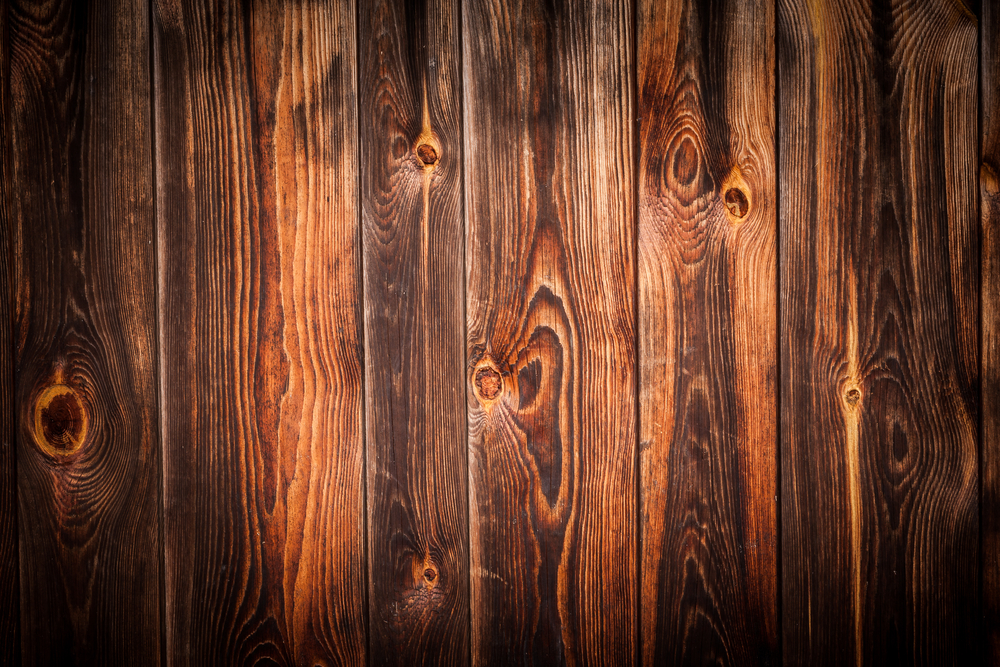
A butcher’s block countertop is made of wood – people can choose from a variety, but the most popular are maple, oak, and bamboo. Of course, the wood you choose will determine the price. There’s a lot of misconceptions on this option.
How does it measure up?
Yes, butcher block countertops require routine maintenance and must be resealed every 6 to 12 months. But, they’re also easier to repair than any other countertop and can be finished to improve their resistance to water, heat and stains. Despite common belief, hardwood actually has better resistance to heat than granite or laminate.
While most materials would be damaged by blades and knives, end grain butcher block’s fibres will separate and mend to preserve both cutlery and the wood surface. If damage is actually done, it doesn’t take much to sand the wood and restore it back to its best form.
Selecting a countertop: What would you go for?
The countertop material you choose to go for will define your relationship with your kitchen space, some will require more maintenance, but will allow you to make a statement about your style without breaking the bank. Before you hop into a showroom, consider hiring a designer to help you figure out the best strategy to achieve the kitchen style you want. It is often more cost effective to hire a professional to guide you through the different options and create a long-term plan.

